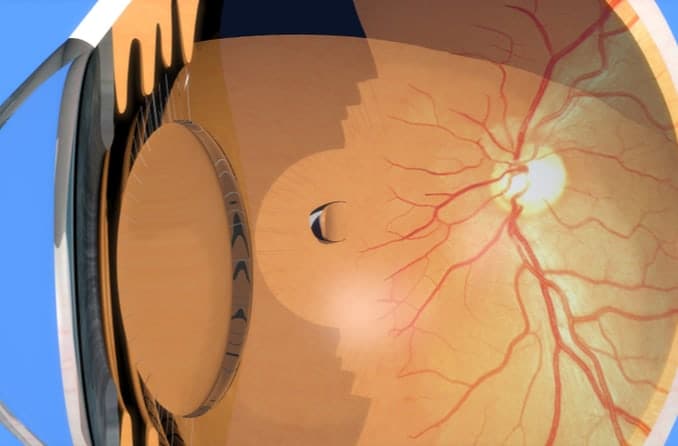Wavy, squiggly or cobweb-shaped
The most common floaters are the ones that look like wavy or squiggly lines in your vision. They can be referred to as “cobweb” floaters, because they tend to drift around your vision like broken pieces of a cobweb.
These floaters, like the others listed below, form when the gel-like fluid inside the eye (vitreous humor) shrinks. This causes tiny fibers to bunch together in the form of visible eye floaters.
Spots and other rounded shapes
Some floaters might be shaped more like little rounded spots or oblong ovals. Rounded floaters are technically the same type as wavy floaters — the only difference is the shape of the vitreous fiber formation.
Ring-shaped
Larger ring-shaped floaters are called Weiss rings. Weiss rings form when the vitreous detaches from the part of the retina that surrounds the optic nerve in the back of the eye.
Like other shapes of floaters, ring floaters are usually harmless. But they can also be a symptom of a serious condition.
SEE RELATED: Do eye floaters go away on their own?
Transparent, shadowy or black floaters
Eye floaters can be nearly transparent, slightly shadowy or almost black.
The color of someone’s floaters can vary just like their shapes. Eye floaters can be nearly transparent, slightly shadowy or almost completely black.
While some floaters are longer and more wormlike in appearance, others can look like little more than black spots or dots in your vision.
Regardless of their color, floaters tend to be most visible when you’re looking at a single-colored object in bright light. A clear, daytime sky or a light-colored wall are common examples.
Seeing “stars” in your vision
It’s common for people to see “stars” or little flashes of light in their vision from time to time. These flashes (photopsia) aren’t physical formations like floaters, but they can be related.
Floaters occur when small fibers of collagen (protein) in the vitreous clump together, forming “floating” strands in our vision. When the thicker portion of the vitreous that’s attached to the retina starts pulling away from it, the traction (pulling) on the retina causes the sensation of a flash of light.
Flashes of light also can be a symptom of a retinal tear or detachment. If you suddenly see flashes of light, see an eye doctor immediately.
SEE RELATED: Phosphenes (seeing stars)
Check with your eye doctor
If you experience new floaters or an increase in existing floaters, make sure to schedule a comprehensive eye exam.
Floaters are usually harmless, but there are situations in which they can represent a serious condition that needs to be treated immediately.
Your eye doctor will dilate your pupil and examine the interior of your eye to determine if your floaters are harmless or require treatment.
READ MORE: Can you reduce floaters naturally?











